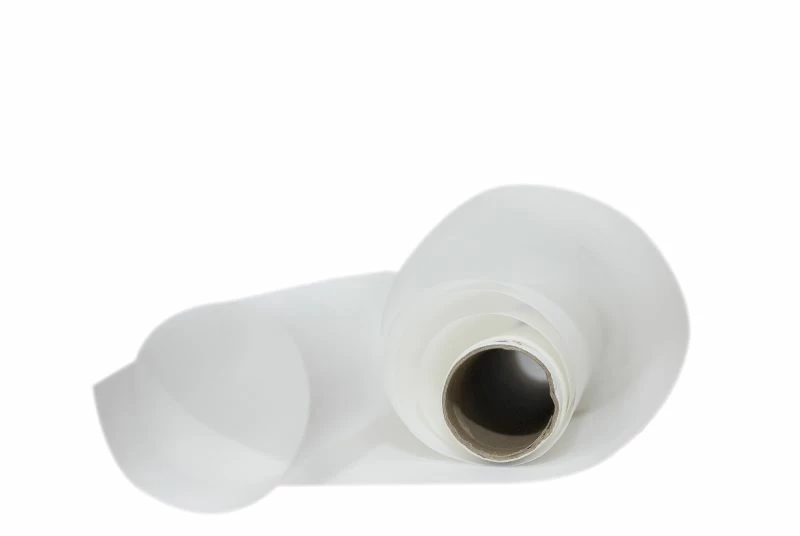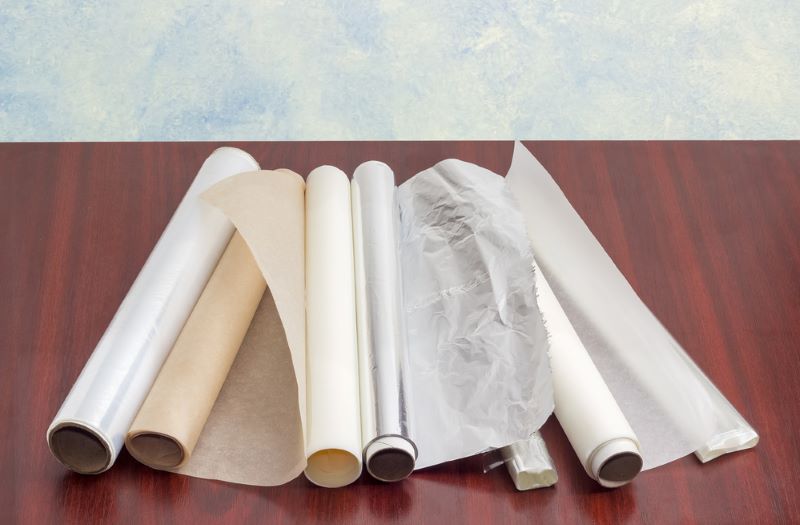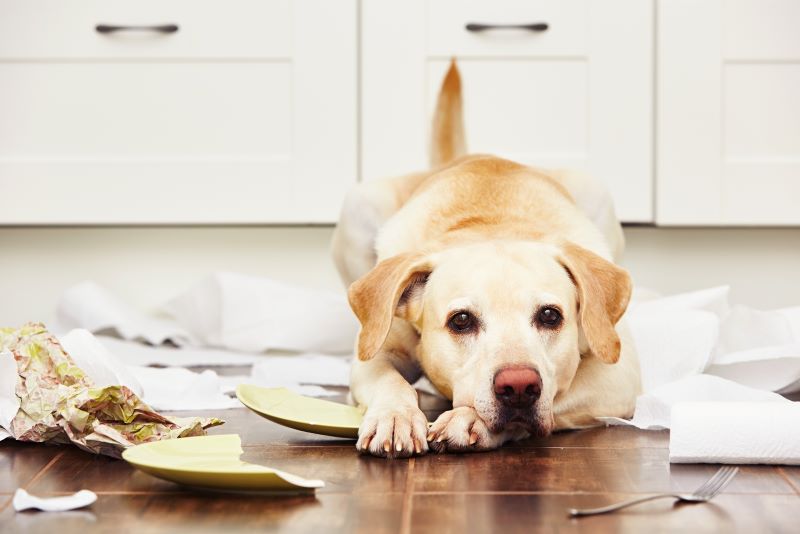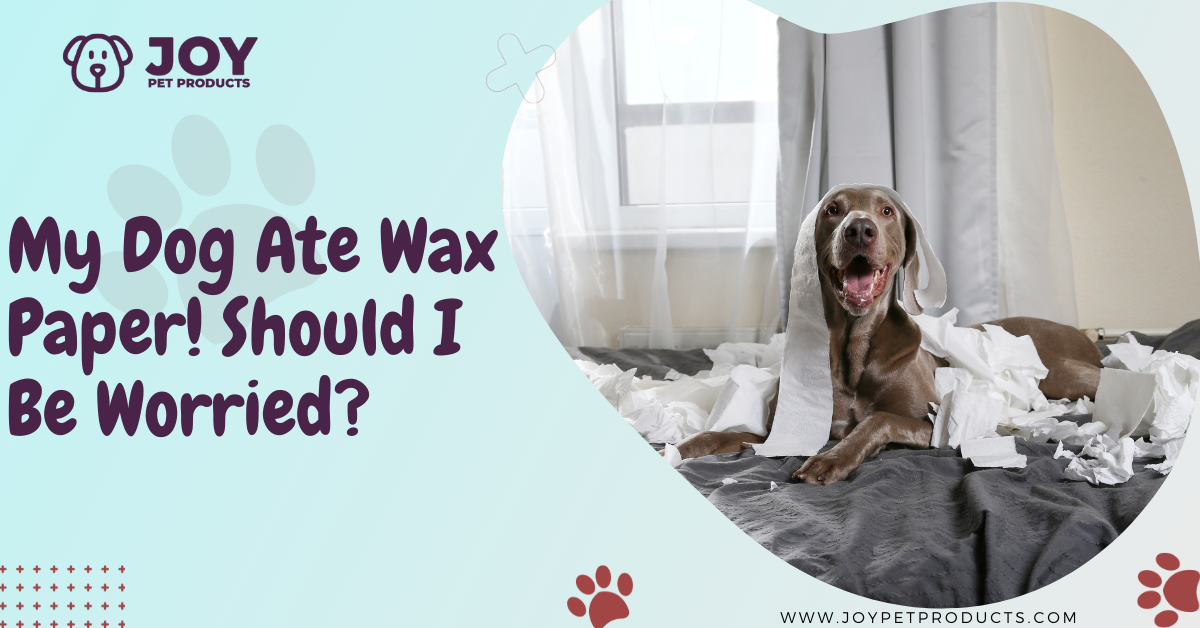Dogs are the ultimate advocates for being constantly fed– no matter the time or place.
So, whenever they smell something scrumptious but aren’t being given the opportunity to savor even a small amount, they’re prone to retaliate by taking a big chomp out of whatever’s been left on the windowsill.
Unfortunately, along with the intended food target, they often also take on some collateral damage by swallowing the foil or wax paper that the pastry was wrapped in.
If the above scenario has eerily played out in reality for you in recent days and had you wondering, “My dog ate wax paper! Will it die?”
Well, I’m glad to say it’s probably destiny that’s brought you straight to the right place!
In most instances, wax paper should travel smoothly through the gut without causing any significant issues.
The paper is non-toxic and therefore is unlikely to lead to any short or long-term health problems.
The only problems that a canine may encounter are (admittedly serious ones of) choking and intestinal blockage. Some dogs can also develop an allergic reaction to certain types of wax.
Although your pup should be fine in the majority of cases, it never hurts to contact a vet or an animal hotline if you have any concerns at all for your dog’s health.
What Is Wax Paper, Anyway?
Wax paper is paper that has been coated with food-grade wax, rendering it effectively moisture-proof.
The most common wax used is paraffin wax, although some products may use beeswax or soybean wax instead.
Due to its water-resistant quality, wax paper has a wide range of uses in the kitchen.
These include being used as a wrap for spreads (commonly butter or margarine), covering countertops for kneading bread, and as a base layer when making pastries such as cherry pies.
The wax used in wax paper is non-toxic to humans (which makes sense, seeing as its main use is for food preparation) as well as to dogs.
Therefore, this means that the greatest danger to a canine of eating wax paper are the issues of choking and intestinal blockage.
Is Wax Paper Digestible?
Although canine stomach acid is sulphurous and is known to be capable of breaking down most of the content that dogs consume, it is not able to break down wax paper.
Both the paper and the wax components are indigestible, though it should pose no toxic issues unless your dog has a specific allergy to wax.
The undigested material will therefore either travel smoothly through the digestive system and out into the feces, or become stuck along the way and cause a blockage.
Why Do Dogs Eat Wax Paper?

Dogs can be extremely strange about eating normally inedible objects, but there is usually an explanation for their behavior.
If you walk in on your dog eating wax paper, it could be possible that they are merely seeking attention or entranced by the paper’s scent.
It’s also plausible that the coated wax- or the other ingredients which were placed on top of the paper- has made the parchment itself smell like a delicious treat.
Your dog could also be exploratory by nature (as many pups are), making anything that looks new a primary target for investigation. You could reduce this behavior by providing dog toys and games which stimulate them mentally and physically.
Alternatively, some pets are just hungry all the time and want a little bit of supper before moving onto their next activity.
To curb their appetite so that they don’t attack the nearest piece of wax paper, it may be a good idea to provide some treats between meals to satiate their hunger.
Alternatively, establish more frequent scheduled meal times to ensure your dog isn’t feeling famished for extended periods!
Finally, a medical condition which could cause a dog to eat wax paper and other inedible objects (like AirPods) and which will require further monitoring and treatment is called pica.
Pica is an eating disorder where a canine will eat everything and anything regardless of its taste or nutritional value.
There are numerous theories as to how a dog can develop pica, ranging from hormonal imbalances and a poor diet to neurological diseases and being on medications such as prednisone.
What Would Happen If A Dog Ate Butter Wrappers?
You’ll be glad to know that in most cases, nothing would happen at all.
In the majority of situations, the wax paper should smoothly pass through the digestive system and into the dog’s feces within the span of a few days.
While it can lead to bowel movement issues in some scenarios, this will usually be transient and ultimately harmless.
In fact, ingestion of wax paper is usually so benign that you’ll probably even forget that your dog had eaten pieces of the material!
Realistically, whether or not your dog experiences any problems will depend primarily on the size of the paper consumed and the size of the pup.
(The amount of paper that was eaten is considerably less important than the area size.)
Logically speaking, a dog will less likely be a victim of choking or intestinal blockage if the size of the ingested paper is small.
Vice versa, if the dog is smaller in size, the narrower airway and digestive tract increases the risk of choking and intestinal blockage.
In rare situations, dogs can also react differently depending on the type of wax incorporated into the paper. As soybean and beeswax are natural products, they may be more well-tolerated when compared to paper treated with paraffin wax.
To sum it up, there are four distinct routes that could develop if your dog ate wax paper:
1. Nothing. Nada. Zilch. The wax paper is eliminated from the digestive tract, coming out as harmlessly as it went in.
2. Blockage of the airway and choking on the paper, in which emergency measures would be required.
3. Vomiting, which expels the waxed material from the stomach.
4. Impediment of the digestive system, which leads to intestinal blockage– requiring emergency measures.
Consumption of foreign materials such as wax paper or AirPods [FFC3] can affect bowel movement but it should not lead to any fatal issues.
1. Nothing Happens

*crickets*
Hear that?
That’s the sweet sound of, well, nothing happening a few hours after you made the discovery of your dog helping itself to wax paper.
What will usually happen is that the paper will quickly soften within the intestinal tract, while the wax component helps to ease the material’s path through the digestive system.
If your dog had also ripped the paper apart prior to swallowing it, they are very unlikely to experience any choking or intestinal blockage.
Over the next 2-3 days, your dog should naturally eliminate the wax parchment via its feces.
This will mean that whenever your dog goes on their potty break, you will need to examine the poop to make sure the ingested paper has been eliminated.
There are several foods- such as canned pumpkin and fiber supplements- which can help to promote bowel movement and increase the speed at which the paper appears in your dog’s stool!
2. Choking
Occasionally, a dog that has swallowed a piece of wax paper may choke.
Due to its imporous and slightly adherent nature (especially after being in contact with moisture), wax paper can conceivably become stuck in the throat.
This can subsequently lead to the poor pup gagging or coughing in an attempt to dislodge the foreign material.
Therefore, if you see your dog is making weird mouth movements after ingesting a piece of waxed paper, you may need to intervene quickly to assess and treat the condition as appropriate.
Other signs of choking can include:
- Distressed behavior (such as tail tucking and otherwise acting strangely)
- Excessive salivation
- Pawing at the mouth
Choking that results from eating foreign objects is more likely to occur in smaller dogs as they have narrower airways.
It is also more likely to occur when a large piece of paper is consumed quickly and as a whole piece.
If your dog begins to show signs of choking, make sure you remove the material as soon as possible in order to prevent asphyxiation, unconsciousness, and possible death.
3. Vomiting

In some cases, your dog may expel the pieces of wax paper by throwing up the ingested material.
If the foreign material has yet to travel further down the digestive tract, the pooch may vomit as its body rejects the strange substance.
You may see signs of gagging or coughing as your dog attempts to forcefully expel the pieces of paper.
If your dog does vomit, make sure to examine the emitted material carefully in order to determine if the amount it originally consumed has all been expelled.
In some cases you may be advised to induce vomiting, but this should only ever be done under professional guidance and within 30 minutes of swallowing the wax paper.
4. Intestinal Obstruction
In rare cases, a dog may experience intestinal obstruction after it has consumed wax paper.
Foreign materials can become lodged within the digestive tract and impede proper bowel movement.
This may mean that your puppy will no longer poop after they have eaten, or the poop may be of a smaller and drier quality.
Internal blockages are more likely to occur if the piece of wax paper is too big or if the dog in question is comparatively smaller in size.
Smaller breeds and puppies will have narrower digestive tracts and will therefore be more susceptible to intestinal obstruction if they eat ill-suited objects (such as much-maligned rawhide strips).
Signs that can suggest an intestinal obstruction is currently taking place include:
- Lack of appetite
- Lethargic
- Abnormal behavior (such as staying in one spot and being reluctant to move)
- Constipation
- Diarrhea
- Vomiting
- Difficulty defecating
If your dog begins displaying these signs, you will need to enlist immediate professional assistance.
Procedures such as surgery and endoscopy may be required depending on the size of the ingested wax paper and severity of the symptoms.
In extreme cases where the obstruction is left unresolved, it can develop into a gastrointestinal perforation where intestinal contents spill out into the surrounding tissues.
This can develop into a life-threatening condition, but it is thankfully rare as treatment is often provided before issues escalate to this stage.
Due to the potentially fatal implications, it is vital to provide treatment as soon as possible both to reduce the costs of treatment as well as to improve the prognosis of the condition.
What To Do If Your Dog Eats Wax Paper

After finding out that your dog ate wax paper, there are several steps to take to ensure that no life-threatening consequences take place.
These steps include monitoring for choking, contacting a vet, and keeping an eye on your pup over the upcoming days.
It is also important to remove all foreign objects and store them safely away to prevent future reoccurrences.
If you ever feel unsure of what to do in any situation, never hesitate to consult a vet or animal hotline as this will help to prevent the issue from escalating beyond your control.
1. Monitor For Choking
If your dog is coughing, gagging, and otherwise behaving abnormally after eating wax paper, it could very well be choking.
Choking is a serious issue and requires urgent attention.
Open your pooch’s mouth and see if you can locate the foreign item. Try to remove it if you can do so safely (without the use of any long or sharp tools).
Otherwise, it may be necessary to perform the Heimlich Maneuver, or to take your best pal to the nearest vet immediately.
If possible, try to identify the amount of paper eaten as well as whether it was consumed with any other potentially toxic substances.
This will help to determine the amount of paper you should expect to see in their vomit or feces, and whether any further actions will be needed.
If your dog seems fine initially, move onto the next step.
2. Contact A Vet Or Animal Hotline
If possible, contact a vet or an animal hotline within 30 minutes of the incident.
Notify them of the age, breed, and size of your dog, as well as the signs that are currently being displayed. These will help determine the level of treatment required at this stage.
The vet may ask you to continue monitoring at home and check for traces of the paper in the poop over the next couple of days.
They could also ask you to bring your dog into the clinic so that a physical examination can be performed. Once at the vet’s clinic, the procedure of induced vomiting may be carried out.
Induced vomiting is best performed by a certified professional. However, in some cases you could be advised by your vet to do it yourself at home.
Induced vomiting should only be executed if it has been less than 30 minutes since your dog ate the wax paper.
After 30 minutes has elapsed, the foreign material will already have moved too far down the digestive tract and any amount of induced vomiting will not be effective for bringing it back up.
Before you induce vomiting, give your dog a few pieces of plain food to make it easier for it to throw up. Doing so will also temporarily protect the inner walls of the digestive tract from acidic bile.
To induce vomiting safely and effectively in your pup, follow these steps after you have received approval from your vet:
1. Administer to your dog 3% hydrogen peroxide at a dosage of 5mL per 10 pounds of bodyweight (approximately half a teaspoon).
2. Encourage your dog to move around for a few minutes to mix the hydrogen peroxide solution with its stomach contents.
3. If your dog doesn’t vomit after 10 minutes, provide a second dose.
4. Keep the doses to two maximum unless otherwise advised by a veterinary professional, in which case you may be given the go-ahead to provide a third and final dose.
If your dog doesn’t vomit- or if they do throw up but the wax paper does not reappear- ask for further advice from your vet.
Again, if it has been more than 30 minutes since your dog ate the wax paper, the vet may advise you to take the ‘wait and see’ approach instead as the foreign material may simply be naturally excreted over the coming days.
3. Monitor Your Dog Over The Next 2-3 Days
Over the next 48 to 72 hours, the wax paper may eventually find its way into your dog’s poop.
You will need to examine your dog’s feces carefully to be certain that all the pieces of paper have been removed from its system.
To help promote bowel movement, your vet may suggest a bland diet consisting of foods such as rice and boiled chicken or beef.
A plain diet will help to ease the load on the dog’s digestive system. Another benefit is that the food will wrap around the paper to make sure it passes through the intestinal tract smoothly and safely.
The amount of chicken and rice to feed to your dog will depend on their weight. To have a more thorough understanding of the oft-prescribed chicken-and-rice bland diet and its pros and cons, check out our article by clicking here!
Over the next few days, it would also be a good idea to monitor for signs of pain or strange behaviors as they could be developing signs of intestinal obstruction.
To resolve an intestinal blockage, the best (and really, only) course of action would be to take your pet to the vet immediately.
Obstruction caused by eating foreign materials can require surgical removal, but if the object is small and benign enough (like I’d imagine wax paper to be) an endoscopy could also be an appropriate option to dislodge the wax paper.
How To Stop Dog From Eating Wax Paper

To prevent a dog from eating foreign materials, always keep all potentially harmful objects far away out of its reach.
If the reason for your dog’s fascination with inedible objects is boredom, a good way to preoccupy its time and attention is by giving it chew toys and puzzle games.
Avoid giving your dog branches as chew toys as splinters can be dangerous and the branch may have been treated with chemicals or pesticides.
It is also highly advised that you install locks for cupboards and garbage cans, or at least make it a two-step process to open any containers so that any light-pawed offenders are suitably deterred.
Finally, encourage your fellow human household members not to drop or leave any items on the floor where the dog can easily access- unless they want to be digging through poop in a couple of days, of course!
With a combination of a healthy diet, sufficient mental and physical stimulation, and proper behavioral guidance, you’ll see that your pup will no longer feel the need to eat or chew on everything in sight!
Final Thoughts
Rather than actually being helpful and assisting you when baking bread or crafting pies, it’s much more common to find a dog helping themselves to the wax paper you placed on the countertop.
Thankfully, wax paper is non-toxic and also shouldn’t cause any issues on that front. However, you still have to be mindful of the potential choking and intestinal blockage hazards.
It is admittedly very rare for dogs to experience any problems unless they’ve swallowed a large piece of paper, or if the dog is smaller in size and therefore has narrower airways and digestive tract.
In most situations, the ingested wax paper should appear in your dog’s feces within the next 2-3 days.
By promptly establishing the issues at hand and performing the necessary procedures to prevent the problems from escalating, your dog will likely be just fine.
In the future, always make sure to implement proper preventative measures so that your dog doesn’t have the opportunity to try out any other foreign materials!
Heather Abraham is a professional blogger who owns two dogs, a cat, a parrot, and a leopard gecko. She has a connection with animals since she was a child. She shares her love for all pet breeds and provides information on pet food, toys, medications, beds, and everything else.
She is committed to learning about the internal workings of animals. Her work permits her to work closely with knowledgeable vets and obtain practical expertise in animal care. When she is not working, her love of animals continues in her writing. Her goal is to educate and uplift readers who also have a passion for animals through her writing.
